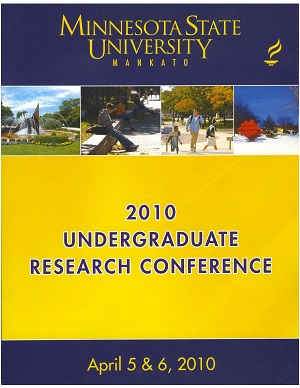Herd Immunity and the Necessity of Vaccinations: Modeling the Effects of MMR Vaccinations
Location
CSU 284A
Start Date
6-4-2010 10:00 AM
End Date
6-4-2010 12:00 PM
Student's Major
Biological Sciences, Mathematics and Statistics
Student's College
Science, Engineering and Technology
Mentor's Name
Anne-Marie Hoskinson
Mentor's Department
Biological Sciences
Mentor's College
Science, Engineering and Technology
Second Mentor's Name
Namyong Lee
Second Mentor's Department
Mathematics and Statistics
Second Mentor's College
Science, Engineering and Technology
Description
The MMR vaccination is a two dose vaccine given to children between the ages of 12 – 15 months and the second dose between the ages of 4 – 6 years to prevent measles, mumps, and rubella. The objective was to mathematically model the effects of the MMR vaccinations in a hypothetical school through multiple compartment and spatial models. These models were based on each disease individually with their respective vaccine effectiveness and disease infection rates. These models demonstrated the limits of herd immunity.
Herd immunity occurs when a high enough percentage of the population is immune or vaccinated to prevent the spread of diseases to those who are susceptible. Once herd immunity was determined, the necessity of the vaccinations became evident. This model demonstrated the effects of not vaccinating a child and how it affected not only the individual but the whole population. Through this, parents, educators, and public health officials can be educated on the importance of getting children vaccinated.
Herd Immunity and the Necessity of Vaccinations: Modeling the Effects of MMR Vaccinations
CSU 284A
The MMR vaccination is a two dose vaccine given to children between the ages of 12 – 15 months and the second dose between the ages of 4 – 6 years to prevent measles, mumps, and rubella. The objective was to mathematically model the effects of the MMR vaccinations in a hypothetical school through multiple compartment and spatial models. These models were based on each disease individually with their respective vaccine effectiveness and disease infection rates. These models demonstrated the limits of herd immunity.
Herd immunity occurs when a high enough percentage of the population is immune or vaccinated to prevent the spread of diseases to those who are susceptible. Once herd immunity was determined, the necessity of the vaccinations became evident. This model demonstrated the effects of not vaccinating a child and how it affected not only the individual but the whole population. Through this, parents, educators, and public health officials can be educated on the importance of getting children vaccinated.
Recommended Citation
Cardetti, Caitlyn; Katie Groskreutz; and Melissa Zins. "Herd Immunity and the Necessity of Vaccinations: Modeling the Effects of MMR Vaccinations." Undergraduate Research Symposium, Mankato, MN, April 6, 2010.
https://cornerstone.lib.mnsu.edu/urs/2010/oral-session-10/8



